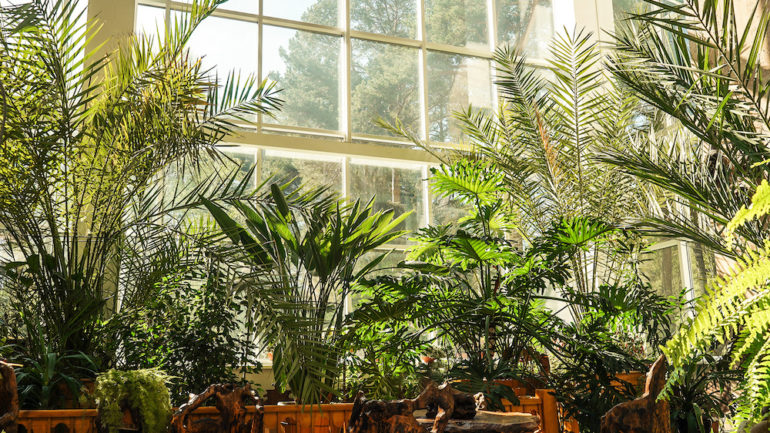Some homeowners are lucky enough to live in view of a lake, a forest or mountains. But with the biophilic design trend, even city dwellers can make their homes’ interiors trigger the good feelings nature provokes. Here’s our primer on biophilic design and how you can use its principles to bring the benefits of the great outdoors into your home.
What is biophilic design?
Biophilia is defined as the human tendency to interact or associate with other forms of life found in nature. So biophilic design is home decor that brings the feeling of being outdoors into your home.
Being in nature is said to improve physical and mental health, promote calmness and even increase productivity. Because most people spend most of their time indoors, biophilic design helps promote the healing power of nature even for those who can’t get outside as much as they’d like.
How to bring the outdoors inside your home
Here are some ideas for incorporating biophilic interior design into your home’s decor.
- Let in as much natural light as possible. Remove heavy window coverings and furniture pieces as well as overgrown exterior plantings that block the view from your windows. Position furniture to take maximum advantage of your home’s natural light. Place your breakfast table, for example, near a window that gets the morning sun, or position your favorite chair to take advantage of a sunset view. Keep windows clean. As for artificial lighting, provide a variety of sources, such as ceiling lights, table and floor lamps, sconces and candles. These multiple sources will allow you to vary the amount of light depending on the time of day, just as Mother Nature does.
- Open your windows. Not only will you get fresh air and better ventilation, you’ll get to hear the birds sing and the crickets chirp. If it’s not feasible to keep your windows open, a ceiling or tabletop fan can keep the air moving like a gentle summer breeze.
- Fill every room in your home with plants. Display them on tables or countertops, hang them from ceilings and place large and small plants on the floor, shelving or plant stands. You can even install a living wall full of plants. Not only will plants give a feeling of the outdoors to your interior, they’ll promote good health by cleaning your home’s air.
- Use natural colors for paint, fabrics and wall coverings. Green is an obvious choice, but don’t stop there. Think of the natural habitats you like best — the beach, for example — and choose colors that remind you of those areas, such as the cool blues and sandy browns of the seashore.
- Incorporate natural textures throughout your home, such as bamboo, stone, leather, natural fibers, cork, unfinished woods and rattan. Choose countertops, furniture, flooring and decor items made from these materials. A sisal rug in the dining room, for example, will evoke an outdoor feeling, as will a rattan bookcase or a sculptural piece of driftwood on a foyer table.
- Use natural forms where possible. Curved and asymmetrical shapes with soft edges are far more common in nature than straight lines and right angles. Choose a curved coffee table for the living room or arch interior doorways and windows if you’re remodeling. Handmade furniture pieces will contribute to the natural look.
- Bring the outside indoors with decorative accents. Choose artwork showing scenic landscapes, ocean views or birds and other animals. Fill a green glass vase with branches from your yard or display a bird’s nest on a shelf. Look for pottery or glassware decorated with natural forms such as shells or ferns, and use baskets made from natural materials for storage.
- Incorporate water into your home’s design. The gurgle of a tabletop fountain can remind you of a cool mountain stream.
- Provide a beautiful view from your home’s windows with landscaping. If you don’t have a yard, install window boxes planted with flowers or place potted plants on your apartment’s balcony.
Related – Green Living: How to Install a Living Wall


